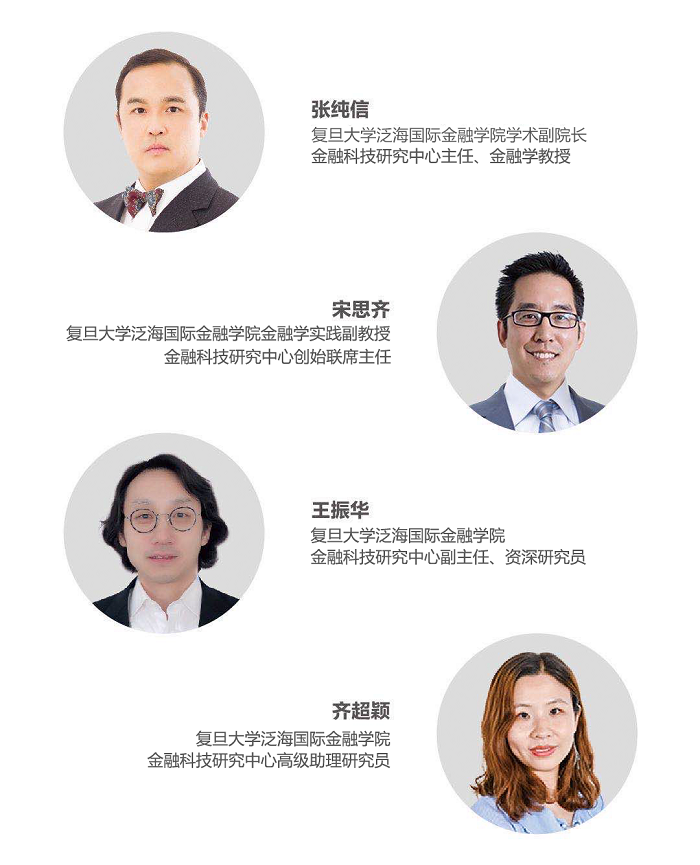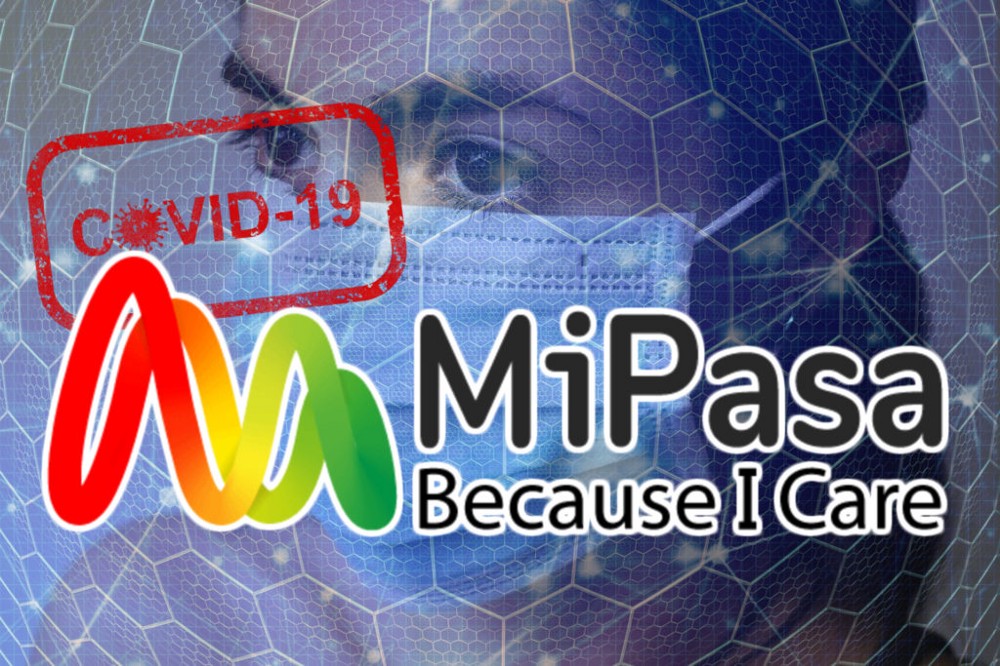全球问题的FinTech解决方案

导语
以太坊问世五周年,不断推动金融科技创新,也对监管提出了更多挑战:去中心化还是包容?下一个五年也许能给出答案。中国BSN国际官网成形,或将成为连接世界、推动贸易、促进合作的全球信任网络骨干。此外,区块链技术在医疗信息管理、金融欺诈预防等领域的创新,也势将推动金融科技在全球问题中扮演越来越重要的角色。

拉至底部,阅读英文原文
以太坊五周年:去中心化还是包容?

以太坊问世已逾5年。其作为当年仅21岁的创始人维塔利克˙布特林(Vitalik Buterin)推出的一款“去中心化应用平台”,已成为迄今为止功能最强大的区块链工具之一。在这个平台上,智能合约管理着从金融交易到数字艺术的一切。
从那时起,区块链被重新构想,其应用覆盖了主权货币管理,这与比特币早期采用者的最初理念相去甚远。事实上,在过去几个月中,复旦大学泛海国际金融学院金融科技研究中心发布了一系列报告,分析了区块链如何助力诸如公共卫生等复杂信息系统的管理。以太坊已经证明,通过扩展链的新用途,可促进其生态的繁荣,成为最受开发人员欢迎的链,并引领资产通证化、分布式金融以及潜在的去中心化自治组织(DAOs)等基础开发。
展望未来5年,去中心化自治组织的兴起或将模糊金融机构之间的界限,这些机构主要是实行集中管理的实体企业,尽管它们也可能触及网络业务。通过利用私有/许可网络,以太坊已经在金融机构内部得到采用和调整。但是,我们也看到由监管机构引领的区块链应用在挑战我们的既有观念,即一个完全包容的网络也需要监管者参与其中。区块链技术的目标是去中心化还是将参与度最大化?市场能否既透明又集中?虽然当时存在争议,以太坊仍向我们展示了干预(在这种情况下,交易的逆转可能是所有区块链禁忌中最糟糕的)是强大的,有时也可能是最好的。
如今,像Axoni这样的大型初创企业正在展示区块链能够为金融业带来的价值,而像摩根大通这样的大型公司则在开发自己的区块链产品。由此来看,以太坊的广受青睐也是其最大的风险之一,因为面对全球成千上万的用户(未来可能还会增加数十亿),其骨干基础设施仍然不足。希望像许多人预测的,2020年底的全面调整可以继续推动金融科技的增长和机遇。
BSN:向全球信任网络骨干迈进

于2020年4月25日启动的区块链服务网络(BSN,Block-chain-based Service Network),作为主要的区块链互操作性基础设施网络,是中国国家区块链战略的一部分,代表了互操作性标准的基础架构,可允许不同的区块链、IT和数据中心生态系统无缝、统一地互操作。 它是一种用于分布式应用程序的跨云、跨门户和跨链的全球公共基础架构。
BSN由中国国家信息中心、中国移动、中国银联和红枣科技(Red Date Technology)联合发起,并已整合了中国大部分头部私有/许可区块链框架。2020年7月31日,它宣布整合以太坊、EOS和Tezos。诸如亚马逊网络服务(Amazon Web Services)、谷歌云存储(Google Drive)、微软云(Microsoft Azure )和百度云等云服务提供商也已被整合,从而能够提供超低成本的区块链云服务。 目前,BSN在全球范围内部署了130多个公共城市节点,覆盖了中国所有省、区、市和主要城市,并分布在全球六大洲的国际节点。 到2020年底,BSN计划在中国主要城市拥有超过200个节点。
每个国家都有相关法律法规来管理互联网和区块链技术的部署和使用。 BSN旨在成为一个全球互操作性网络,因此必须遵守中国的相关法规,并适应其他国际区块链生态系统。2020年8月10日,面向全球用户和开发人员的BSN国际官网上线,红枣科技负责开发BSN国际的技术路线图、实施和治理。随着BSN国际官网成型,BSN或将很快成为连接世界、推动贸易、促进合作的全球信任网络的骨干。
WHO和全球公共卫生信息:疫情撬动下的区块链创新

危机往往促进发展。新冠肺炎疫情激发了医疗信息管理领域采用区块链技术的创新。2020年2月和3月,金融科技研究中心发表文章,讨论了区块链技术如何提升传染病报告并改善预警系统。 通过将定位技术、人工智能和其他工具应用于传染病的管理和预防中,我们可以极大提高疫情早期识别能力。 一如既往,可信、可靠的数据仍然是关键。
2020年3月28日,世界卫生组织(WHO)宣布与技术公司IBM、甲骨文、区块链平台Hacera和微软建立合作伙伴关系,推出基于平台的分布式账本MiPasa,以促进新冠肺炎疫情相关的数据共享。各国卫生机构(包括美国、欧洲和中国的主管部门)都对该项目做出了贡献。 该平台可以监测和运行有关本地和全球流行病趋势的预测模型。
同样,阿拉伯联合酋长国社区发展部(MOCD)正在采用分布式账本技术(DLT)解决方案来进行身份验证和分发官方文件,从而使客户能够在家中安全地与MOCD进行互动。中国还在许多应用程序中部署了区块链以抗击新冠肺炎疫情,并使用DLT跟踪病毒的传播以及医疗物资和捐赠的分发。
与此形成对比,美国政府宣布将于2021年7月退出世界卫生组织。自1948年成立以来,世卫组织一直致力于“促进健康,维护世界安全和为弱势群体服务”。在世卫组织协调制定针对新冠肺炎疫情疫苗的全球倡议时,美国选择了退出,这对信息共享造成了严重障碍,并可能导致更多人丧生。 最终,这将损害美国与其他国家的双方利益,因为美国将不再从其他国家的工作中受益,国际社会也将失去美国的信息和专业知识。正如北卡罗来纳大学教堂山分校全球卫生政策副教授本杰明·梅森·迈耶(Benjamin Mason Meyer)所言:“美国可以停止一切交流,可以寻求在美国与世界其他地区之间建立隔离墙,但是我们 一次又一次地看到,这些墙壁无法阻隔疾病。”
在我们推进这些努力并应对未来可能出现的任何挑战时,部署在医院和机构一级具有分布式信息的去中心化网络可能是重要的工具。 医学专家之间的合作和数据共享是至关重要的。如果政客们不能为解决方案提供资金,也许技术可以。
Wirecard丑闻:德国的“安然事件”

无论是鉴于中国咖啡巨头瑞幸的会计违规行为,还是在最近德国支付巨头Wirecard陷入的欺诈诉讼中,人们都不禁会想知道现有系统是否根本不适合提供必须的透明度、验证性和欺诈检测水平。 而金融科技的发展已经使其部署成为可能,而且效率相对较高。
就Wirecard而言,这家德国付款处理商和金融服务提供商曾跻身德国DAX指数的30家上市公司之列。2020年6月26日,该公司市值损失近120亿美元,股价跌幅近90%。就在此前一天,该公司董事会披露Wirecard将申请破产,主要原因是Wirecard资产负债表上有19亿欧元不知去向。该丑闻是近年来最大的会计舞弊之一,以至于一些人称其为“德国的安然”。
重要的是,尽管该丑闻直到2020年才爆发,但自2008年以来就一直有针对该公司不法行为的指控。“吹哨人”声称,Wirecard一直在进行会计欺诈,通过报告虚假交易来增加收入。据路透社报道,Wirecard伪造了其三分之二的销售额,具体方式是将欺诈活动隐藏在通过第三方执行的、眼花缭乱的收购活动中。据报道,2019年,Wirecard全球收入的一半和几乎所有利润都是通过这些第三方处理的,而这些第三方交易在功能上是不透明的。
人们只能猜测,如果金融机构和监管机构采用了区块链技术来提供透明度、可追踪性和有效监控,多少投资者财富本可能免遭其难。随着数据和验证的改进,对账户持有人的强化审查(KYC)和反洗钱(AML)几乎可以肯定得到改善。同时,早期发现人工智能可能会在危害累积到破产程度之前,阻止恶意行为。 同样重要的是,这种性质的新闻似乎经常出现,虽然以不同的严重程度和频率发生,但的确持续不断。在常态化采用这些改进技术之前,我们听到下一个“安然事件”可能只是时间问题。
Global Questions, Fintech Solutions
Charles Chang
Deputy Dean of Academics, Professor of Finance and Director of the Fintech Research Center at Fanhai International School of Finance, Fudan University
Michael Sung
Associate Professor of Practice in Finance at Fanhai International School of Finance and the Co-director of the Fintech Research Center at Fanhai International School of Finance, Fudan University
Richard Wang
Associate Director of the Fintech Research Center at Fanhai International School of Finance, Fudan University
Chaoying Qi
Senior Research Associate of the Fintech Research Center at Fanhai International School of Finance, Fudan University
Powerful Intervention for DAOs
It’s been 5 years this July since the world was introduced to Ethereum. Pioneer Vitalik Buterin, then just 21 years old, delivered one of the most powerful Blockchain tools ever created, a “decentralized application platform” where smart contracts govern everything from financial transactions to digital art.
Since then, blockchains have been reimagined with applications include management of sovereign currency, a far cry from the original philosophies of bitcoin early adopters. Indeed, over the past few months, our Fintech Research Center has published reports on how Blockchain can help to manage complex information systems like those of public health. Ethereum has demonstrated that, by expanding novel uses of its chain, it could prosper, becoming the most popular chain for developers and spearheading fundamental developments like asset tokenization, decentralized finance, and potentially decentralized autonomous organizations (DAOs).
As we look to the next 5 years, the rise of these DAOs may start to blur the line between financial institutions, principally brick-and-mortar companies with centralized management despite their online tentacles. Ethereum has already been adopted and adapted within financial institutions, taking advantage of private/permissioned networks, but we are also seeing applications of blockchains in which regulatory bodies are taking the lead, challenging us with the notion that a fully inclusive network is one where regulators are also involved. Is the goal decentralization or inclusion? Can a market be both transparent and centralized? While contentious at the time, Ethereum showed us that intervention (in this case, the reversal of transactions perhaps being the most egregious of all Blockchain no-no’s) is both powerful and, sometimes, best.
Today, mega-start-ups like Axoni are showing the value that Blockchain can deliver to the financial industry and mega-corporations like JP Morgan are developing chains of their own. From here, Ethereum’s massive popularity is also one of its greatest risks as its backbone infrastructure is still inadequate in the face of hundreds of millions of users emerging world-wide (and perhaps billions more in years to come). Let’s hope that the overhaul that many are predicting at the end of 2020 will continue to fuel growth and opportunity in Fintech.
Blockchain-based Service Network (BSN)
Launched on April 25, 2020, the BSN, a major blockchain interoperability infrastructure network, is part of China’s National Blockchain Strategy and represents an interoperability standard foundational infrastructure that allows different blockchain, IT, and datacenter ecosystems to interoperate in a seamless and unified way. It is a cross-cloud, cross-portal, and cross-chain global public infrastructure for distributed apps.
The BSN was jointly initiated by the China State Information Center, China Mobile, China UnionPay and Red Date Technology and has integrated most of the top private/permissioned blockchain frameworks in China. On July 31, 2020, it announced integrations with Ethereum, EOS, and Tezos. Cloud service providers such as Amazon Web Services, Google Drive, Microsoft Azure, and Baidu Cloud are also integrated to be able to provide ultra-low cost blockchain cloud services. The BSN currently has global deployment of over 130 public city nodes, covering all provinces and major cities in China as well as international nodes distributed across six continents. The BSN is slated to have over 200 nodes in major cities across China by the end of 2020.
Each country has laws and regulations to govern the deployment and use of the Internet and blockchain technology. The BSN is meant to be a global interoperability network so must comply with related regulation in China but must also accommodate other international blockchain ecosystems. The official BSN International portal for global users and developers was launched August 10, 2020, and Red Date Technology has been tasked with developing BSN International’s technology roadmap, implementation, and governance. With the formation of BSN International, the BSN may soon become the global backbone for trust network that will connect the world, facilitate global trade, and foster collaboration.
The WHO and Global Public Health Information
Crisis often also breeds progress and COVID-19 has inspired innovation in medical information management through the adoption of blockchain technology. In February and March of 2020, the Fintech Research Center published articles discussing how blockchain technology can enhance infectious disease reporting and improve early warning systems. By applying positioning technology, AI and other tools to the management and prevention of infectious diseases, we can vastly improve early epidemic identification. As always, credible, reliable data remains the key.
On March 28, 2020, the World Health Organization (WHO) announced a partnership with technology companies IBM, Oracle, Blockchain platform Hacera, and Microsoft to launch MiPasa, a platform-based distributed ledger, to promote data sharing related to COVID-19. Health agencies in various countries (including authorities in the United States, Europe and China) have contributed to the project. The platform can monitor and run predictive models on local and global epidemic trends.
Similarly, the Ministry of Community Development (MOCD) of the United Arab Emirates is adopting distributed ledger technology (DLT) solutions for identity verification and distribution of official documents, enabling customers to interact with MOCD safely from home. China has also deployed blockchain in many applications to fight the pandemic and uses DLT to track the spread of the virus and the distribution of medical supplies and donations.
In contrast, the US government announced that it will be withdrawing from the WHO in July 2021. Since its establishment in 1948, the WHO has been committed to "promoting health, maintaining world safety and serving vulnerable groups" . The US withdraw from the WHO at a time where it is coordinating the global initiative to develop a vaccine against COVID-19 introduces a critical impediment to information sharing that may result in more lives lost. This, ultimately, hurts both sides as the US will no longer benefit from the work of other nations, and the international community will lose the information and expertise of the US. As Benjamin Mason Meyer, Associate Professor of global health policy at the University of North Carolina at Chapel Hill, opined, “The US can stop all communication and can seek to build a wall between the United States and the rest of the world, but we have time and time again, seen that these walls will not block the disease."
Decentralized networks with distributed information at the hospital and agency levels may be an important tool as we forward in these efforts and for any future challenges that may lie ahead. The cooperation between medical experts and sharing of data is paramount, and if politicians cannot fund a solution, perhaps technology can.
The Wirecard Scandal
Whether in the case of accounting irregularities for coffee giant Luckin or in recent fraud proceedings with German payment giant Wirecard, one cannot be help but wonder if existing systems are simply not suited to provide the level of transparency, validation, and fraud detection that advances in fintech have made both possible and relatively efficient to deploy.
In the case of the Wirecard, the German payment processor and financial services provider was once among the 30 listed companies on Germany’s DAX index. On June 26, 2020, it lost nearly US$12 billion in market value, a nearly 90% share price drop, a day after its board revealed that it would be filing for insolvency owing principally to €1.9bn missing from Wirecard’s balance sheet. This scandal is among the largest accounting frauds in recent history, leading some to call it “the Enron of Germany.”
Importantly, while the scandal did not explode until 2020, there have been allegations of wrongdoing since 2008. Whistler-blowers claimed that Wirecard had been engaging in accounting fraud to inflate revenues by reporting false transactions. According to Reuters, Wirecard falsified two-thirds of its sales, enabled by a strategy of hiding the fraudulent activities in a nebula of acquisitions executed through third-party. In 2019, it was reported that half of Wirecard's worldwide revenue and almost all of its profits were processed through these third parties, for which transactions were functionally opaque.
One can only conjecture as to how much investor wealth may have been protected had financial institutions and regulators employed blockchain technology to provide transparency, trackability, and effective monitoring. With improved data and validation, KYC and AML would almost surely have been improved, and early detection AI may have prevented nefarious behavior before it could accumulate to levels that would ultimately result in insolvency. Just as importantly, it seems that news of this nature is recurrent, rearing its head in different severity and frequency, but reliably every-so-often. Until we have permanent adoption of improved technologies like those described here, it’s likely only a matter of time until we hear about the next Enron.
*本文经原作者授权,仅代表作者个人观点。